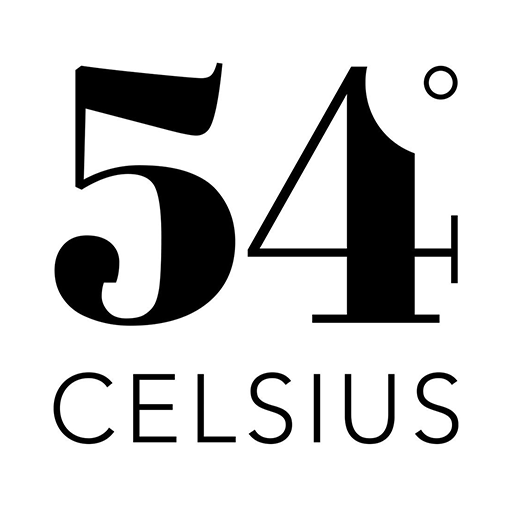Meet Lex Pott, Creator of Twist, Wiggle, and Rope

Meet Lex Pott, Creator of the Twist Candle
We at 54Celsius are proud to work with emerging designers, artists, and craftspeople from around the world to bring you products that are not just candles, but wax works of art — and we want to make sure their stories get told. So we are sitting down with each of our collaborators to introduce the creative minds behind the candles.
This time around we’re featuring Lex Pott, the artist and designer who brought the Twist Candle to life. Throughout our conversation, he opened up to us about his boyhood growing up among artists, how materials can inform the finished product, and what lessons he thinks designers and makers can take from the COVID-19 pandemic.
54 Celsius: Let’s start with an introduction. Can you tell us about your background as an artist and designer?
As you know I’m Lex, a product designer based in Rotterdam. I actually come from a family of artists — my mother was a painter and my father was a sculptor — so I really grew up in a cultural environment, you could say. But the other side of the coin is that it’s quite tough to make a living as an artist. We all romanticise it and think we’ll be the next Picasso. That’s not really it.
When I finished high school, I went to visit the Design Academy Eindhoven for their graduation show. Being so young, I wasn’t really sure what I was looking at but I loved it straight away. So I ended up going there for school and got an education in what was called Applied Arts, studying how to combine functionality with a kind of sculptural or a cultural value. I graduated in 2009 — cum laude, I’d like to add. (Laughs.)
After I graduated, I did freelance work for other designers for a few years to get some experience and see how studios were operated. But also, I founded my own studio straight away. That was almost 12 years ago.
54 Celsius: What about your artistic process? How do you come up with ideas for projects?
In my work, I’m very hands-on, material-driven, and experimental. Every project starts with a certain material or technique. From there, I try to zoom in on it, learn about the properties of the material, and see where a new intervention or production method might ultimately lead to a different outcome.
I also try to look at everyday objects that are overlooked or ignored. Ten years ago, I worked on mirrors because they weren’t really a topic in design. It was the same with candles. Many of the candles we use in our daily lives are archetypes, like tea lights, dining candles, and pillar candles, so they intuitively felt like the right thing to investigate. Not a lot of designers had paid any attention to them.
54 Celsius: Was that what initially inspired the Twist Candle?
Funny enough, it started when I was working with wood and had to carve something on a lathe. Turning wood on a lathe is quite challenging, so I put a candle on the lathe to start because it’s such a soft, easy-to-work-with material. That was my first introduction to candles. And I immediately fell in love with the material.
Part of that love was that wax is so accessible and affordable. Maybe more important for the Twist Candle, though, are the properties of the material itself. We all know wax as a solid and, when it melts, as a liquid. But I was really fascinated in the moment in between: when it’s not fully solid and not fully liquid.

54 Celsius: From there, how did you develop the Twist Candle as we know it now?
I began by experimenting with simple dining candles from the supermarket, bending and shaping them as proof of concept. Then the tough work started: the real development and design process.
From the start, we knew that the shape was really crucial. I wanted to have one iconic shape at the conclusion, so to speak. And I couldn’t stop thinking how nice it would be if, from one candle, you could make two candles by burning both ends. (It was only later on that I found out this was a common expression in the United States!) I also wanted it to be a standalone candle without a candle holder. That’s why we used the “S” shape, to give it stability. Finally, I wanted it to be fun. I think the final candle shows that — when you see it, it’s a very optimistic object.
Just as important as the shape, though, was the technique. So we invested in a proper candle-making machine, a real industrial version. Because you can’t D.I.Y. everything. (Laughs.) The molds were also a big topic: we needed to make molds that did not only make one good candle, but could reproduce it seriously as a product.
I think the process, from start to finish, was about three to four months of lots of trial and error. Because no matter how simple something might look, it’s insane.
54 Celsius: What made you want to produce the Twist Candle as a product?

It was actually always one of my dreams to design, develop, produce, and distribute a product all on my own. And I thought the Twist Candles would be the perfect thing to try.
When they were ready, I ended up showing them at a booth at Object Rotterdam, a super-local, low-key fair right next door to my studio. I loved the romantic and nostalgic idea of having your own booth. But that was February 2020, right before the pandemic kicked in. It was one of the last physical design fairs before the Netherlands went into lockdown.
54 Celsius: That timing must have been tough.
We were very lucky that the candles got a lot of traction at the fair — people immediately liked and wanted to buy them.
But I also feel that part of the success of the Twist Candles was that we were all local. The wax came from the Netherlands, and I was making them in Rotterdam, working with local people. All these global infrastructures didn’t affect us at all. In that sense, it gave me a lot of peace of mind. If all hell breaks loose, think small and look closely at what you can still do, instead of what’s not possible.
54 Celsius: Such great advice. So, what’s next? Are there any projects you’re excited about coming up?
Something I learned from this whole process is that I get the most joy in life from designing objects, rather than reproducing them or repeating my work. So right now, I want to focus on different topics and materials other than wax. Maybe I’ll go back to candles one day, but I don’t want to be a self-producing designer. I really want to focus on the essence and the conceptual side of design.
For example, one key element that I’m moving toward in my work is the democratization of design. I don’t only want to make gallery pieces for the happy few — I hope to design things that are accessible for a wider audience. But in terms of what everyday object I’ll work on next, I am not sure yet. I have a long list but it’s not clear what the short list, or the final product, will be. For now, I’m in the process of analyzing things, trying things, trial and error, and experimenting.
My ultimate dream would be to live surrounded by my own objects. I would love to have a living room where I have designed everything: the sofa, the lamp, the coffee machine…
54 Celsius: Design for your whole life.
Exactly. A holistic definition of design.
More Creations by Lex Pott: Wiggle, Rope, and Pivot Candles
Beyond the iconic Twist Candle, Lex Pott brings his innovative approach to design with the Wiggle, Rope, and Pivot Candles. Each one is crafted to add vibrant, playful elements to your space while fitting standard-sized candleholders.
- Wiggle Candles: These taper candles introduce a sense of movement, as if they’re swaying mid-air, offering a unique and lively aesthetic.
- Rope Candles: Featuring spiraled textures in bold colors, these candles are as visually striking as they are tactile, transforming any room with their coiled, vibrant design.
- Pivot Candles: Smooth and gradient in color, the Pivot Candles twist in a subtle pivot-like pattern, bringing an elegant flow to the space.

